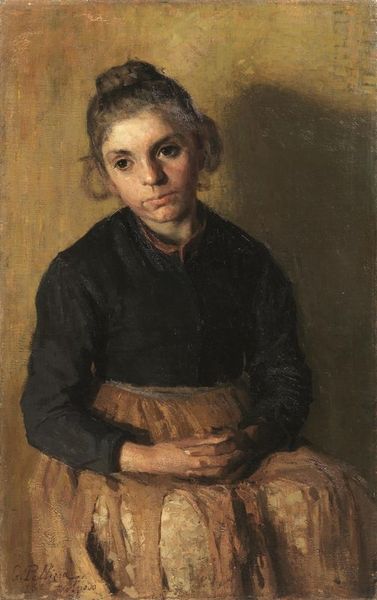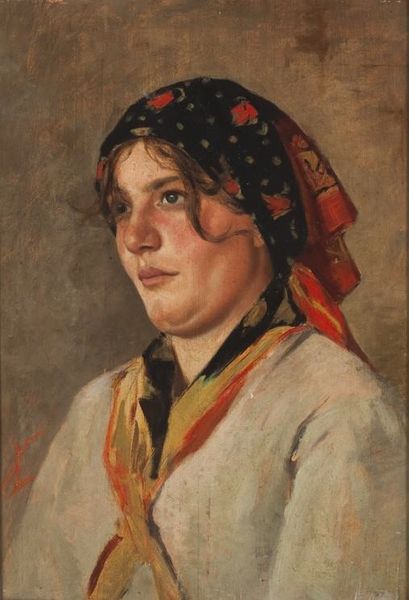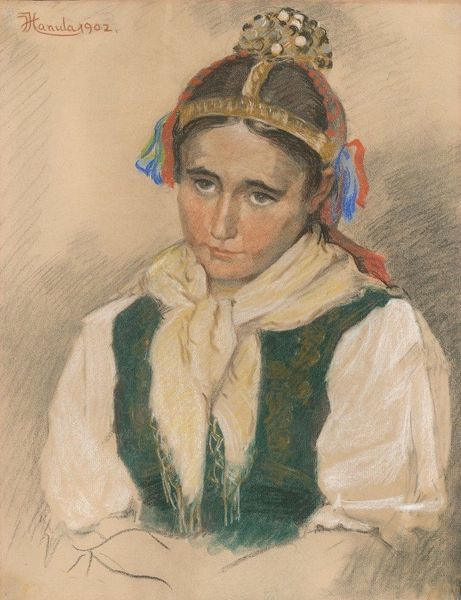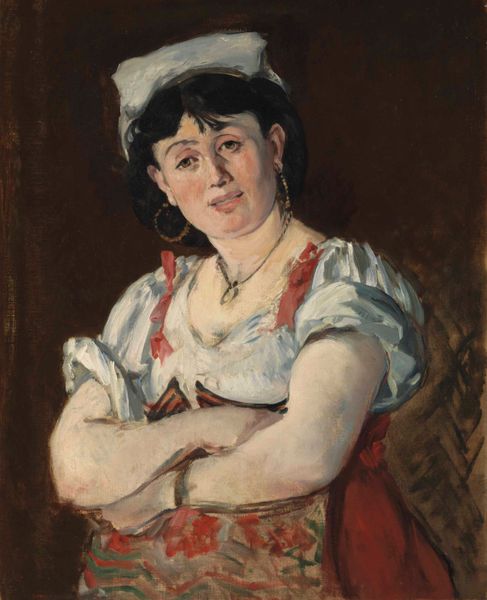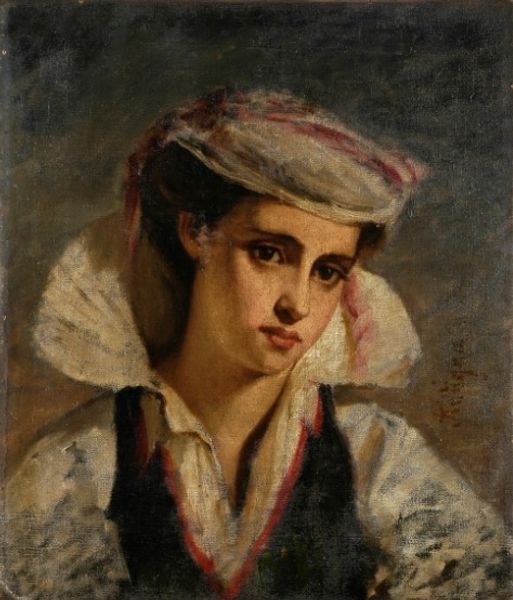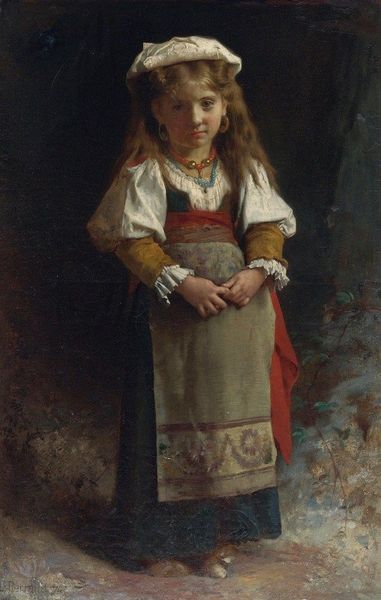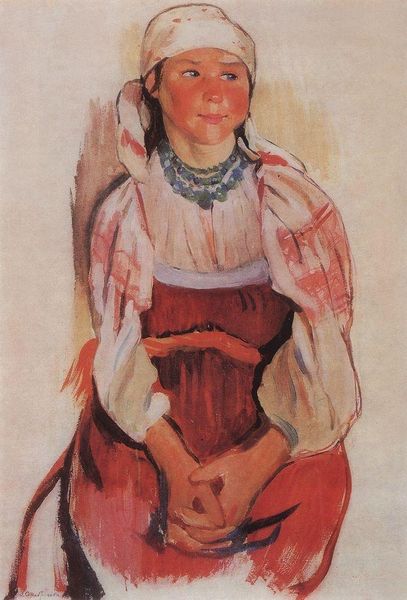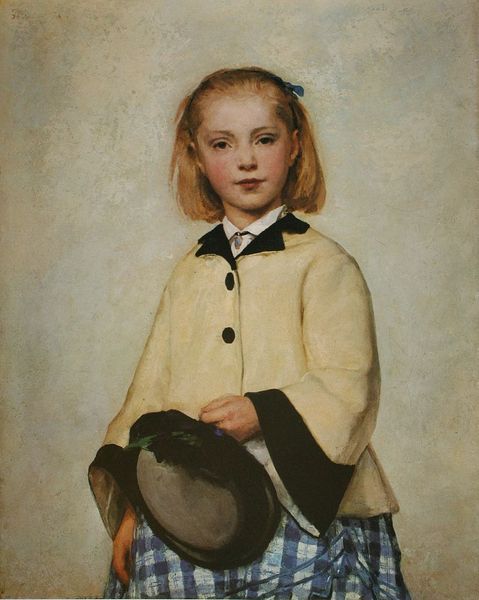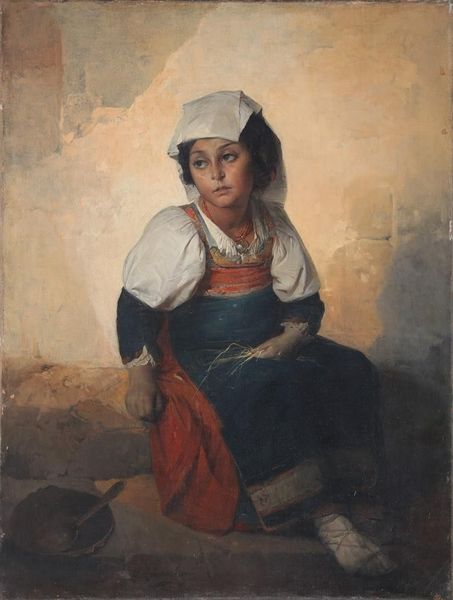
Copyright: Public Domain: Artvee
Editor: Here we have Jozef Hanula’s “To Boyfriend,” created around 1910 using oil paint. What strikes me immediately is the detail in her traditional clothing, which looks very elaborate and handmade. How do you interpret this work? Curator: For me, this painting invites us to consider the labor embedded in those details you mentioned. Think about the time and skill involved in creating the fabrics, embroidery, and adornments she wears. It highlights the importance of craft and the cultural significance of traditional skills often marginalized as ‘women’s work.’ Editor: That's a good point. The making of the dress. So, the letter in her hand and the title… is it commenting on the social expectations or even the economic realities of courtship at the time? Curator: Precisely. The exchange of letters, the giving of gifts like the flower, and her clothing – each is tied to a network of production, resources, and even expectations of labor within relationships. What is given freely had an origin. This context speaks volumes about gender roles and social dynamics in early 20th century Slovakia. Editor: It shifts the focus from the sentimental aspect to something more tangible, I see. Were these garments typically made at home? Curator: More than likely. Each stitch and bead reflects hours of skilled labor. To downplay or ignore such creation overlooks this painting’s material basis, its historical context, and social meanings tied to making and consumption. Editor: So we are acknowledging the artist and also the artisans who produced the very elements included in the portrait? This changes my entire outlook on genre painting. Curator: Exactly. By focusing on these elements, we can reconsider how this genre of art challenges traditional art historical perspectives. Editor: Well, I'll definitely look at portraits differently from now on, thinking about the makers behind the props, so to speak. Curator: Indeed, by tracing the materials and production, we unearth new layers of meaning and understand how even the simplest image reflects complex social relations.
Comments
No comments
Be the first to comment and join the conversation on the ultimate creative platform.

